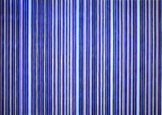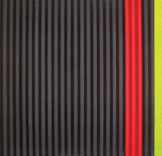 |

|
 |

"Selected Works from the Estate of Gene Davis"
April 6 - May 12, 2007
Opening reception: Friday, April 13, 6 - 8 pm
concurrent with opening reception at Connor Contemporary Art, for the exhibition, "Howard Mehring: All Over Paintings".
PRESS RELEASE:
"Selected Works from the Estate of Gene Davis"
April 6 - May 19, 2007
In its fifth solo exhibition for Gene Davis, the Marsha Mateyka Gallery will
present a wide range of paintings, drawings, watercolors, and prints from the artist's Estate. The gallery has been the continuous market representative of the Estate of Gene Davis since 1997.
The Marsha Mateyka Gallery exhibition will be concurrent with "Gene Davis: Interval" , the Kreeger Museum's exhibition of works by the artist which relate his abstractions to musical concepts. Both exhibitions are part of the larger, citywide ColorField Remix events. A number of the works in the Kreeger exhibition will be on loan from the Estate of Gene Davis, Marsha Mateyka Gallery.
In the early 1970's, the influential critic Clement Greenberg acclaimed the work of Gene Davis, Morris Louis and Kenneth Noland. These three artists were the best known of the first generation of the Washington Color School and all three gained national recognition in the ColorField movement.
Gene Davis was arguably the first artist to use hard edge vertical stripes solely as a vehicle for color. From 1959 to his sudden death in 1985, he became famous for the tremendous variety of works, both in size and expression, that he was able to create in this stripe format. The artist's "micro" paintings are no bigger than 1 inch while the artist's site specific painting "Franklin's Footpath" involved a mile of stripes painted in 1972 on the Benjamin Franklin Parkway in front of the Philadelphia Museum of Art.
When asked "Why Stripes?", Gene Davis replied "It seemed to me to offer a way out of the loose biomorphic form characteristic of most of the work executed around 1957-58." ( 1 ) . Before discovering the stripe motif, Gene Davis also experimented in the 1950's in the prevailing biomorphic abstract style of the time, but his innate color sense was apparent even then. A group of Gene Davis watercolors and wash drawings from this early period will be on view in the Marsha Mateyka Gallery selection of works from the artist's Estate.
In an interview for ArtForum in 1971, Gene Davis explained to art historian
Barbara Rose," I'm the most intuitive of painters. ...I often will use the color I have the most of...and trust my instincts. ...whatever I happened to have around is put on because I have to bounce off of things, I have to get something started. I've got to get some red or some green up there on the canvas then I start off and I paint my way out of the painting" .( 4 ) The rigid, formal structure of the vertical stripe was in deliberate contrast to the artist's avowed intuitive approach to color.
To appreciate a finished painting, the artist recommended to the viewer the same approach of selecting a specific color. "Instead of glancing at the work, select a specific color...and take the time to see how it operates across the painting. Approached this way, something happens. I can't explain it. But one must enter the painting through the door of a single color...if the viewer selects individual colors and looks at them across the surface of the work, he's almost reliving the painting process,... the spectator is, in a sense, entering into kind of a time experience in the same way that I did when I painted it." ( 2 ).
A Washington native, Gene Davis was a much respected member of the Corcoran faculty and a major participant in the Washington art community. In 1987, the National Museum of American Art ( now Smithsonian American Art Museum ) celebrated Gene Davis' important career with the "Memorial Retrospective" for the artist. Gene Davis's paintings are in major museums throughout the country, including Chicago Art Institute, Whitney Museum of American Art, Guggenheim Museum, Walker Art Center, The Phillips Collection, Corcoran Gallery of Art, Hirshhorn Museum, Smithsonian American Art Museum, and National Gallery of Art, Washington, DC..
Gene Davis once said "The only requirement I make of art, and this may sound a little simplistic, is that it look good and continue looking good with the passage of time".( 3) By the artist's own measure, his works easily stand the test of time. Now, in the 21st century his paintings, drawings, watercolors and prints, are as fresh and engaging as they were when he created them, two generations ago. His work was highly influential during his life time, as it is now in the work of contemporary artists.
1. Gene Davis, Interviews by Walter Hopps, Barbara Rose, Donald Wall, edited by Donald Wall, 1975, Praeger Publishers, New York., p. 27
2. ibid. p.138
3. ibid p. 137
|



 |

|
|
| |

|
|
|
|